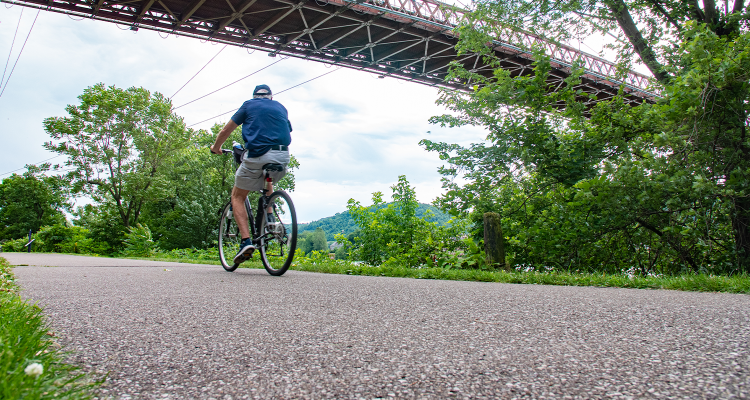Throughout the COVID-19 pandemic, getting out of the house for fresh air has become a necessity and, of course, Wheeling Heritage Trail has become a popular spot for walking, running and biking. This newfound popularity raised questions of the history of the trail and how it came to be a recreation hub.
The fact that the Wheeling Heritage Trail was built on the path of Baltimore and Ohio Railroad tracks is mentioned on every website referring to the trail, but how the entire trail came to be had some unexpected twists.
The original tracks of the B&O Railroad reached Wheeling in 1853 and remained the end of the railroad through the Civil War. Approaching from the east, the Hempfield Railroad and Viaduct was completed in 1857 to connect the city of Wheeling with Washington, Pennsylvania. The Hempfield Railroad operated independently until 1861 when the Hempfield Railroad was bought by the B&O Railroad to expand their tracks in the area and joined the two sections in Center Wheeling. All these tracks became part of the historic B&O Railroad until the Chesapeake & Ohio Railway acquired control of the B&O Railroad in 1962. The Chesapeake & Ohio Railway formally merged with the B&O under the parent company of CSX Corporation in 1987 — marking the official end of the B&O Railroad.
A few years later, the CSX Corporation planned to demolish sections of the railroads in Wheeling. This prompted the Friends of Wheeling to successfully petition the West Virginia Division of Culture and History to prevent the demolition of the historic railroad.
Following the Friends of Wheeling acquisition of some sections of the railroad, the City of Wheeling acquired sections of the north/south railway from Conrail with the inspiration to connect citizens of Wheeling back to its heritage as a major trading port connected by the river, road and rail. The transformation of this public space to the current Wheeling Heritage Trail was spearheaded by Paul Mcintire Sr. and Hydie Friend.
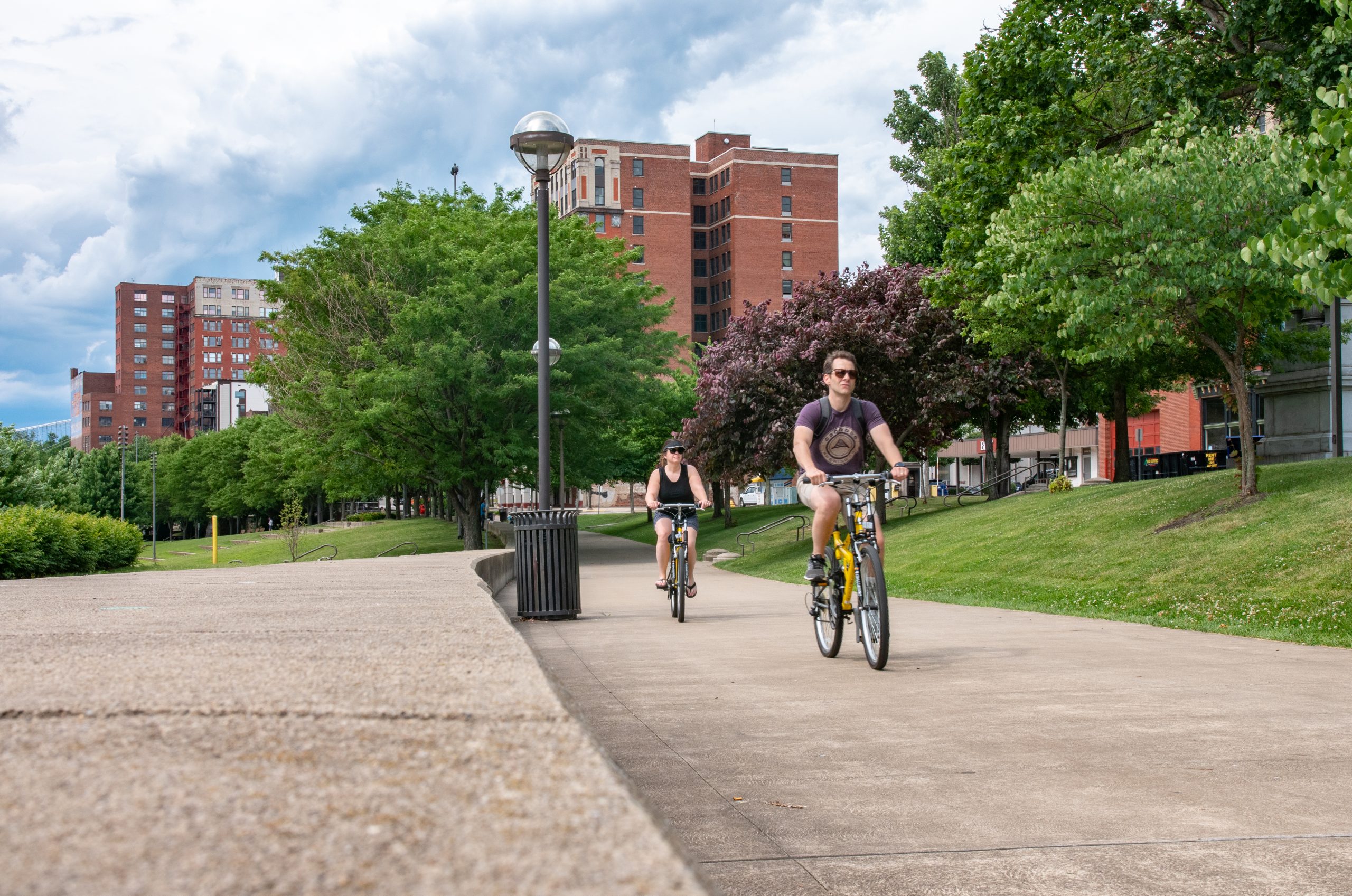
By 1992, Wheeling Heritage, the Heritage Trail Partners and the City of Wheeling developed a plan for a 13-mile bike and pedestrian trail (now an 18-mile trail) to occupy portions of the abandoned railroad tracks. This Wheeling Heritage Trail was completed in 1995 and opened to the public for recreation. Since its first opening, the trail has gradually expanded throughout the city of Wheeling, spreading farther north and south, followed later with the eastern expansion of the trail.
TRAIL HISTORIC HIGHLIGHTS
The original bike and jogging trail provided a great spine to interpret Wheeling’s heritage with representation of businesses and neighborhoods along the trail. Ten years after the trail opened, interpretive signage was added along the trail and throughout Wheeling. Five of these signs are both on the trail and include historic information that you can still see along the trail today.
• The Wheeling Wharf was the major port in Wheeling from the late 18th century until the 1950s when a parking garage was built on the site. Since its time as a port, the Wharf has been transformed into the Wharf Garage and finally the Heritage Port that was developed in 1997 and constructed beginning in 1999. Heritage Port opened to the public in the early 2000s and still maintains remnants of its port history with iron rings embedded in the sandstone wall. This spot references the historic importance of the wharf in connecting Wheeling to the commercial trade of the Ohio River.
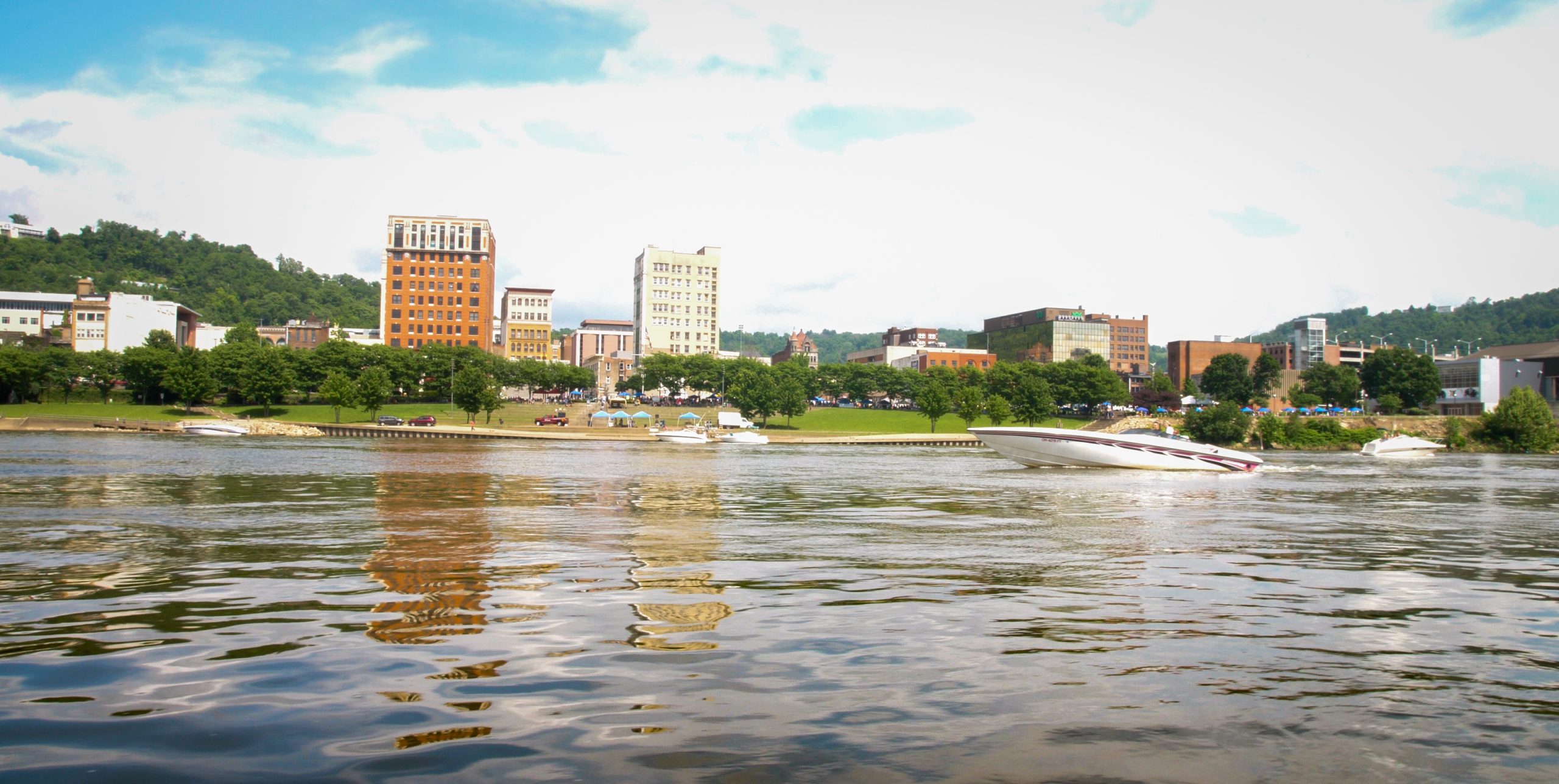
• The Hempfield Viaduct and Tunnel were part of the initial Hempfield Railroad mentioned above, and the current Wheeling Heritage Trail passes through the 163-year-old Hempfield Tunnel. This tunnel is not only historic but also said to be haunted from incidents of unearthing graves, train fatalities and the graveyard located above the tunnel.
• The Wheeling Suspension Bridge can be seen from the Wheeling Heritage Trail. This bridge was completed in 1849 and repaired multiple times over its 170-year life including in in the 1980s and again in 1999. This was the first bridge to cross the Ohio river and is considered the “Gateway to the West,” connecting people and goods on both sides of the river.
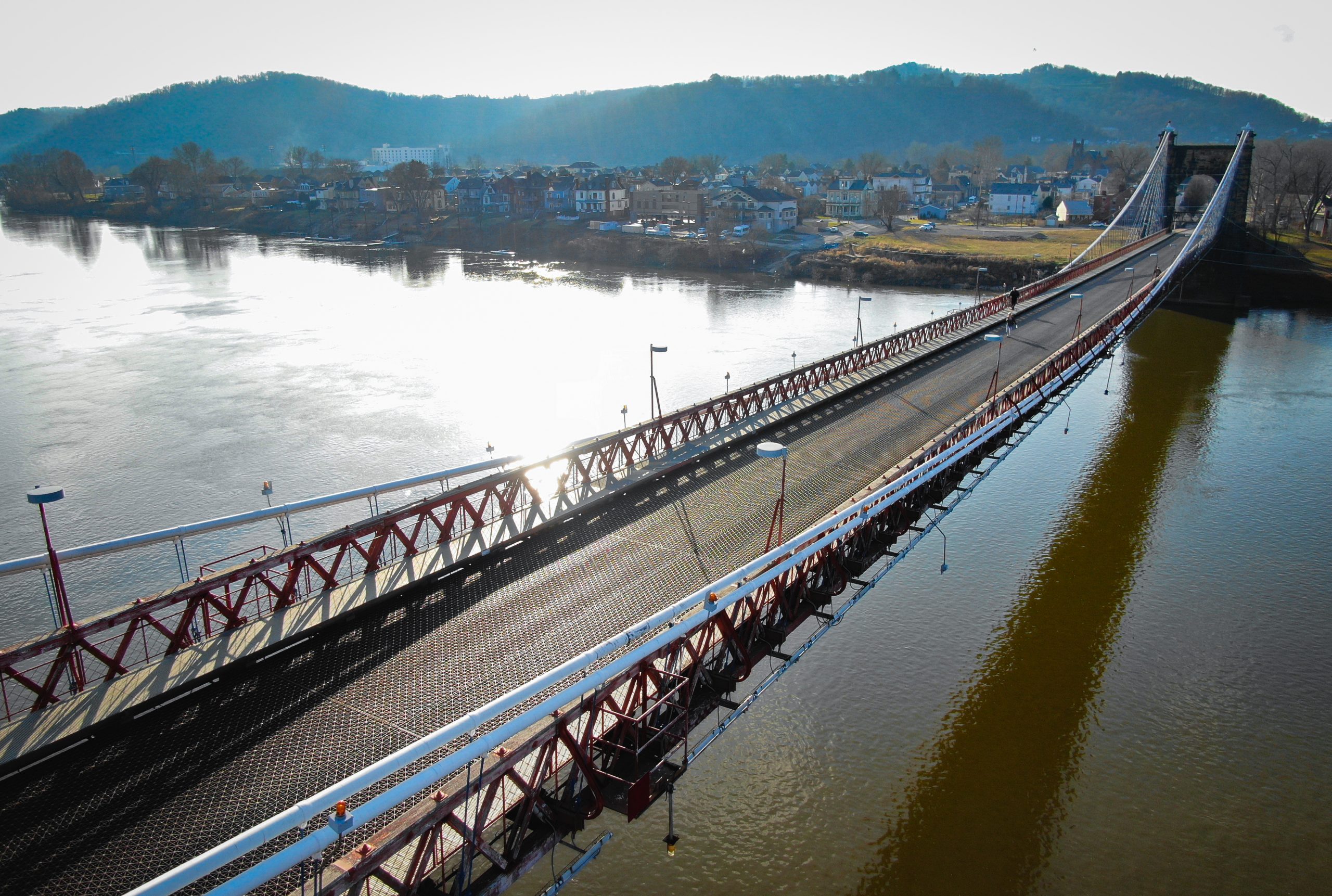
• The Historic Warehouse District on the southside of Wheeling Creek includes multiple historic warehouses that have been repurposed to fit the needs of modern Wheeling citizens. A few of the buildings that can be seen from the trail include the Boury Warehouse, Warwick China Factory, Edward Wagner Grocers and Wheeling Stamping. All of these buildings can be seen from the Warehouse District interpretive sign.
• The Mail Pouch Tobacco building and its iconic Mail Pouch barn signs can be seen from the Wheeling Heritage Trail. This advertising tactic that can be seen on different buildings in Wheeling and across the country were painted between 1891 and 1992. The main factory is on the South Wheeling portion of the trail and the back of the building can be seen from the trail.
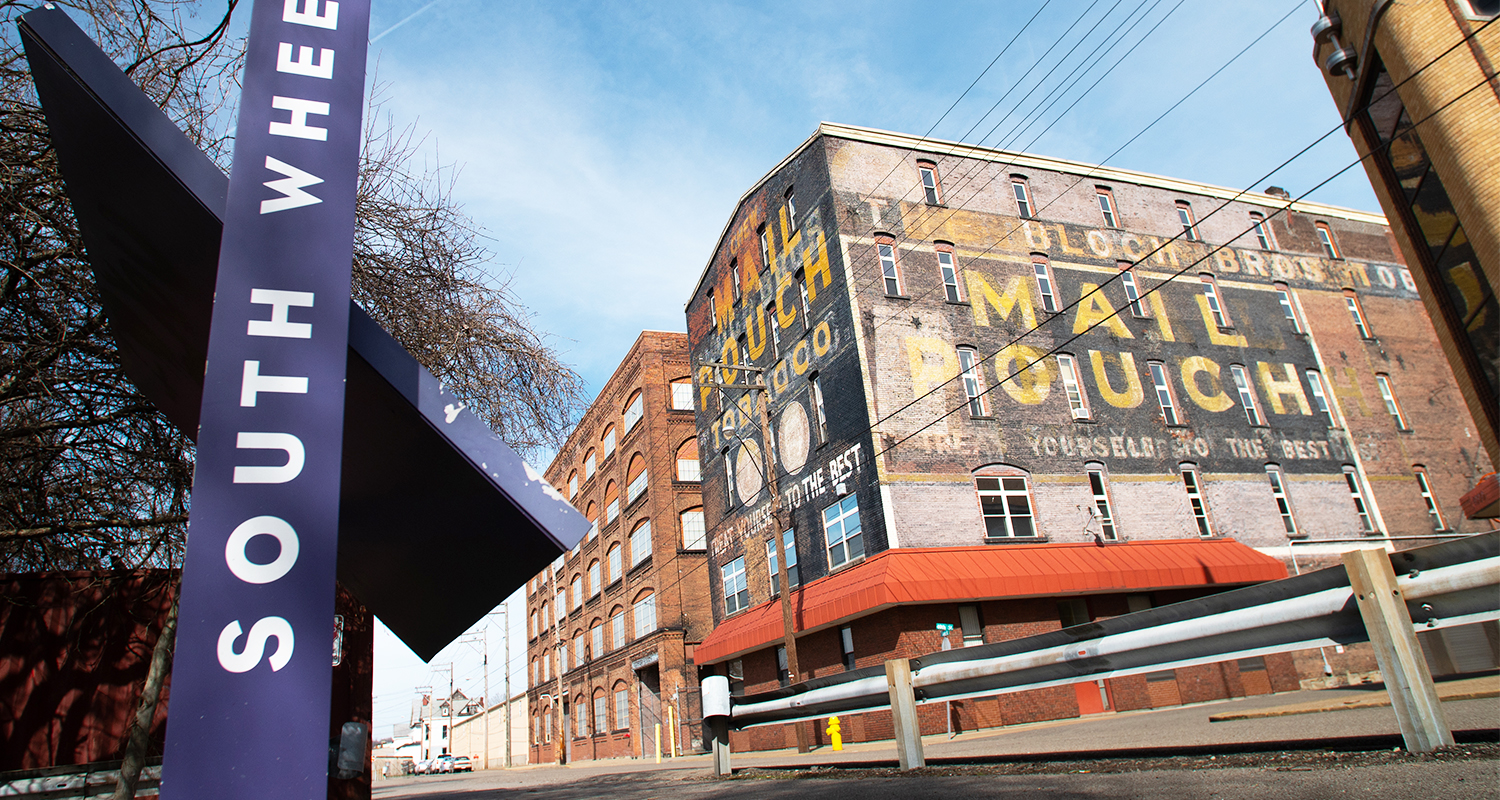
Since its creation, this public space has provided an outlet for public use regardless of class or age. The trail connects the neighborhoods throughout Wheeling, providing a physical representation of how we are unified as a community.
The Wheeling Heritage Trail is no longer comprised of the B&O Railroad taking people and products across the country. But throughout its changing history, the path along the Ohio River and Wheeling Creek has maintained its purpose with new travel along its old tracks.


